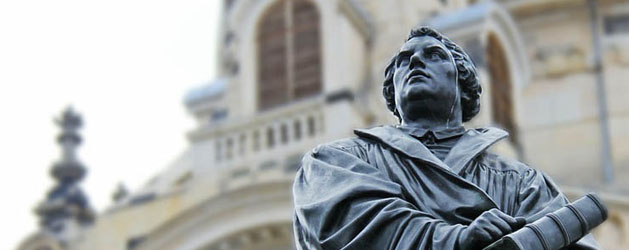
Footsteps of Dietrich Bonhoeffer & Martin Luther 11 Day Reformation Tour
Customize this tour for your group.
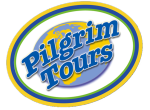
Wholesale Tour Packages Since 1987 - Call Us Toll Free: 800.322.0788

Customize this tour for your group.
| Dates |
|---|
| Request a quote or call 800-322-0788 for more information. |
|
Ask About Special Rates for Pastors, Christian Educators, & Custom Groups of All Sizes. No Obligation Group Quotation - Click Here |
Price Includes: Round trip air from your area, 7 nights accommodations in first-class hotels, breakfast and dinner daily, baggage handling.
Not Included: Gratuities to driver, escort and step-on guides, travel insurance
Airport transfers are included only when airfare is purchased from Pilgrim Tours. Taxi service is available for those purchasing their airfare elsewhere.
Deposit Required: $300 per person will reserve your place. A $100 service fee will be charged for cancellation at any time in addition to our normal payment and cancellation policy.
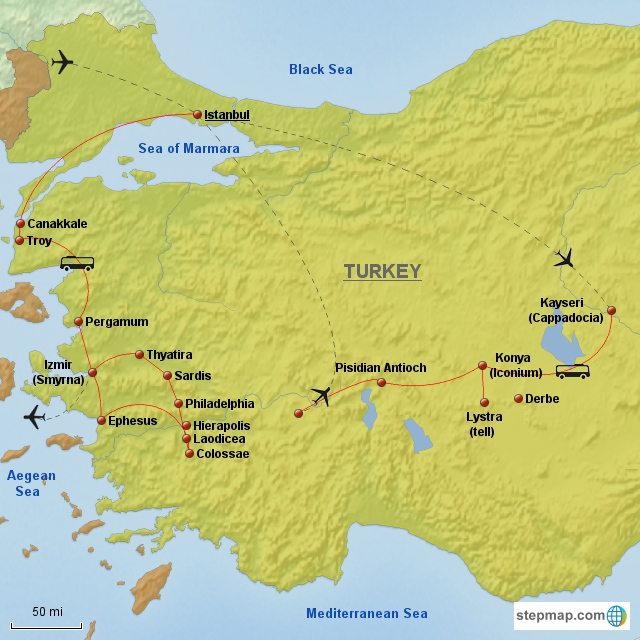
February 2006 marked the centenary of the birth of Dietrich Bonhoeffer, the German Lutheran pastor, who lived from 1906 to 1945. Bonhoeffer, who studied in Tübingen, Berlin and New York, was one of the "Heroes of Conscience" who returned to Germany to join the fight against Hitler. Today he remains an inspiration to all those who protest against the violation of human rights. His writings are among the most profound and provocative theology of the twentieth century. After their involvement in several assassination attempts against Hitler, Bonhoeffer and his brother-in-law, Hans von Dohnanyi, were arrested on April 5, 1943, and charged with treason against the Nazi state for assisting Jews to escape to Switzerland. On the same date two years later, Adolph Hitler personally signed the execution order which condemned them to die just before the liberation of Germany by American forces.
Day 1: Departure
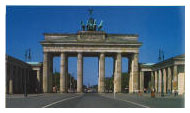
Overnight flight to Europe.
Day 2: Arrival at Berlin International Airport
Half day city tour of Berlin. Visit the Kurfürstendamm boulevard with plenty of shops and cafés, and the Kaiser-Wilhelm-Gedächt- niskirche (Memorial Church) which was destroyed during WWII and only partly reconstructed afterwards. Travel to the eastern part of the City, along the boulevard Unter den Linden which has some of the most interesting historic buildings in Berlin, like the Zeughaus, National Opera, Humboldt University and, of course, the Brandenburg Gate, constructed in 1791 it came to symbolize the division between the east and the west. Friedrichstrasse has a mixture of modern buildings and historic facades. The Gendarmen- markt with its two cathedrals and the concert building is one of the most picturesque places in the city. Welcome-dinner. 2 nights accommodation in Berlin.
Day 3: Berlin
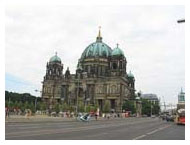
City tour paying special attention to German church history, the resistance to the Nazis, and the key Bonhoeffer sites. The tour ends at the Bonhoeffer House, built in 1935 for Dietrich Bonhoeffer's parents. Hidden here, the manuscript of Bonhoeffer's analysis of the German resistance survived the war. On April 5, 1943, Dietrich Bonhoeffer was arrested in this building, which now houses an exhibition devoted to his works. After a break, enjoy a very special tour taking you back to 1963, when John F. Kennedy was in Berlin during the days of the cold war. This was one of the most significant events in the history of German-American relations. Walk in the steps of the 35th President of the U.S., and along the way visit some of the sights which typify 20th century Berlin: Checkpoint Charlie, the American - Memorial Library and the Tempelhof Airport. During the tour, original television and radio footage from Kennedy's visit will be played.
Day 4: Berlin - Wrocław (Poland)

Visit the "Topography of Terror" exhibition. Between 1933 and 1945, the Prince Albrecht Site was the location of the main offices of the Nazi regime's most important organizations for surveillance and persecution. The Secret State Police Office, the SS leadership and the SS security service were all based here. Excavations and panels provide information about the historical character of the site. An outdoor exhibition shows the history of the location and the Nazi institutions which were based here. Next you will see the "Memorial for the murdered Jews of Europe", also known as the "Holocaust Memorial" - a huge site between the Brandenburger Tor and Potsdamer Platz with 2,751 concrete pillars. This afternoon travel on to Bonhoeffer's home town of Wrocław (350 km)3 nights accommodation in Wroclaw.
Day 5: Wrocław

Full day sightseeing tour. Enjoy the medieval beauty of the Rynek (market square). The square and many of the streets around it were designed by city planners in 1241. It was then and remains to this day one of the largest squares of its kind in Europe. Its center is dominated by the Gothic Town Hall, one of the most precious historical monuments in Poland, and a variety of buildings that replaced the original trading stalls. Also visit the famous Aula Leopoldina, the grand Baroque ceremonial hall at the University. A walk through the lovely, and peaceful part of town known as Ostrow Tumski leads you to an area which is the center of religious life. Visit the Gothic Church of the Blessed Virgin on the Sand and continue to the Church of the Holy Cross and to the Cathedral of St. John the Baptist. The elaborate portal of the elegant twin-spired Gothic church is one of the most valuable medieval artifacts in Wrocław. The Cathedral suffered massive damage in WWII, with traces of bullet holes still visible, and has been meticulously rebuilt since. The guided tour includes a walk through the "District of Mutual Respect," a symbol of tolerance and multi denomination, which houses a Protestant, Catholic, and Polish-Orthodox church as well as a synagogue. Visit the house where Dietrich Bonhoeffer was born. Today it is a small pension with a garden, where you can have a coffee. Meet up with a member of the local Bonhoeffer-Society, who will stay with the group during the afternoon and the following day. Walk to the Old Town and visit the Bonhoeffer-Memorial near St. Elizabeth's Church.
Day 6: Krzyżowa - Świdnica

After breakfast visit the Jewish Cemetery. This is a beautiful and peaceful place where you can learn about a part of Wrocław's history that has all but disappeared. With over 1,200 gravestones and tombs it is among the best-preserved Jewish cemeteries in Poland. Excursion to Krzyzowa (German name is Kreisau) where between 1942/43 the "Kreisau Circle", a group of Germans, based at the Kreisau estate of Helmuth James Graf von Moltke, tried to envision an alternative to Nazism. The von Moltke family estate at Kreisau was, and still is, the symbolic centre for this vision of a new democratic and tolerant Germany. The estate, initially in eastern Germany, now Poland, is the headquarters of The Kreisau Foundation, devoted to the teaching of democratic ideals and tolerance. The visit is followed by a lecture and discussion with experts. In the afternoon continue on to Świdnica and visit the Church of Peace (UNESCO list of World Heritage Sites). It was built in Silesia in the mid-17th century and bears testimony to the quest for religious freedom. It is a rare expression of Lutheran ideology in an idiom generally associated with the Catholic Church. Return to Wrocław.
Day 7: Wrocław - Dresden - Leipzig

Early morning departure for Leipzig. On route visit Dresden, center of the Baroque movement. Dresden's highlights include the magnificent palatial buildings around the Theaterplatz and the Brühl Terraces, and the many art treasures at the state museums. Today, Dresden offers a unique blend of stunning architecture, world-famous art collections and great tradition in both music and fine art. Also enjoy the great natural beauty of the countryside along the Elbe river, as well as the numerous magnificent castles and villas. 2 nights accommodation in Leipzig.
Day 8: Leipzig - Eisleben
In Leipzig visit St. Nicholas' Church, the home of the faithful "Pray for Peace” Christians who were a powerful force in transforming Germany's East and West. Another stop is St. Thomas Church, where Luther preached and introduced the ideas for the Reformation to the people, and Johann Sebastian Bach performed and directed the world famous St. Thomas Boys Choir. In the afternoon travel to Eisleben. Here you will see the house where Luther was born in 1483 and where he died in 1546. Another stop on the tour is St. Peter's Church where Luther was baptized, and St. Andrews Church where he preached his last four sermons and where his body was laid in state.
Day 9: Torgau - Wittenberg
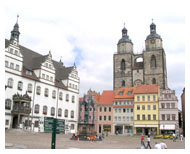
The tour continues - off the beaten track - to the small town of Torgau. During the reformation, the town council closed all of the cloisters in 1523. After Luther had driven Andreas Karlstadt (Bodenstein) out of Saxony in 1524, he expelled his followers in 1529. Martin Luther's wife, Katharina von Bora, is buried in St. Mary's Church. Johann Walter, Luther's musical advisor and close friend, was the cantor at this church. He helped put together a new liturgy and composed the music for many Lutheran hymns. In the afternoon travel on to Lutherstadt Wittenberg. This UNESCO World Heritage site is full of the original sites where the great historical events of the Reformation took place. Luther made Wittenberg the centre of intellectual and spiritual life in Europe. Visit the inspiring Castle Church where Luther posted his 95 Theses. Although the original door was destroyed, you can see the beautiful replica made out of bronze. The "Stadt Kirche" is also very impressive and contains the altar with themes from the Reformation painted by Lucas Cranach. The next stop is the Lutherhalle (Luther's House). Martin Luther first lived here with other Augustinian Monks and later he raised six children here with his wife, Katharina von Bora. Today it houses the largest collection of Reformation artifacts in the world. Overnight in Wittenberg.
Day 10: Wittenberg - Potsdam - Berlin
The tour continues to Potsdam, which is more than 1,000 years old. Palaces and gardens, parks and lakes combine to form a total work of art, a charming picture of courtly elegance and Baroque playfulness. Although the former city center and the palace of the Elector Frederick William were badly damaged during the Second World War, the newer buildings in Sanssouci Park and in large parts of the city are still vivid reminders of what used to be. Sanssouci Palace was Frederick the Greats summer residence. It was built in 1745 as a pleasure palace overlooking the vineyard. Within the spacious Sanssouci Park there are other smaller palace buildings such as the New Chambers, the Orangerie, the Chinese House and Charlottenhof Palace. After an afternoon arrival in Berlin enjoy some free time for shopping at the world famous department store KaDeWe or visit the Pergamon Museum. Farewell dinner. One night accommodation in Berlin.
Day 11: Return Home
Transfer to the airport and departure for the U.S.A.
*The tour itinerary is subject to change or be slightly modified in order to best meet the interests of the group.